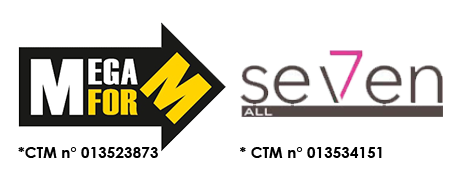The word mark
The name mark is composed ofone or more words, without any particular font, image, color... It protects only the verbal element of your brand.
The trap in which trademark applicants regularly fall is to want to register only the trademark and its logo (see below, the semi-figurative trademark), because the logo is ready, you want to protect it too, you love it, etc...
Now, there is a rule in law that says that "..." the trademark must always be used as registered ». So, in principle, we use the trademark accurately which was communicated to the INPI on the day of filing. But what if you feel like changing your logo one fine morning to give your communication a little boost? A judge may consider that your trademark is no longer protected because you are no longer using the logo as you filed it.
The solution is the word mark: with it, you protect the name in a general way, regardless of the graphic form that you wish to use (provided that you do not infringe the rights of third parties, of course). One day red, another blue, in a circle, in a square, anything is possible! The name is protected anyway. The important thing is only to use the name in connection with the products and/or services referred to in your application (cf. the important notion of use).
Attention the word mark must be distinctive !! If this notion is not yet clear to you, consult without delay our distinctiveness fact sheet !
The semi-figurative mark
It is a brand that includes one or more verbal elements associated with graphic elements: calligraphy, color, logo... For example :
This trademark is usually registered in addition to a word trademark, in order toextend protection from the brand to its graphical display.
This trademark is also registered when thethe verbal element of the mark is not very distinctiveand that the distinctiveness of the mark is mainly apparent from its figurative elements.
For example, a trademark "Atlantic tuna" designating canned fish has no distinctiveness as such, but filed with a distinctive graphic design (drawings, special calligraphy, etc.), it can be filed in semi-figurative form. In this specific case, it is absolutely necessary to avoid the filing of a word mark which will be automatically refused by the INPI.
Please note that in the case of a trademark whose verbal element is not distinctive, the assessment of the distinctiveness of the graphic design will be made by on a case-by-case basis. Sometimes the design is considered too simple or too generic to give the trademark the distinctiveness necessary for its registration. The EUIPO (the European Union's office responsible for registering Community trademarks) is particularly strict on this issue.
Important Until 2014, it was practical to file a semi-figurative trademark in black and white (or grayscale), as it was then considered that the design was protected regardless of the colors used. It would appear that this is no longer the case, following a harmonization of practices at the European level. If someone reproduces in blue a logo that you have registered in black and white, it is no longer considered that these logos are identical. So you now have to argue about the similarity between these logos. Therefore, the black and white filing loses its interest, and it is probably better to file the trademark directly in the colour actually used by the applicant.
The figurative mark
A figurative mark is a mark consisting exclusively of graphic elements, to the exclusion of any verbal element. For example, a figurative mark is a mark consisting exclusively of graphic elements, excluding any verbal element:
The figurative mark may also be composed of :
- of one colour, with no other associated shape.
For example, the Orange brand whose essential characteristic is the chosen shade of colour.
- a three-dimensional shape, used to protect the shape of a product. However, this shape must not be the natural shape of the product (it must be specific to the trade mark so that the consumer can associate this shape with the undertaking which markets it) and it must not be dictated by the technical function of the product (e.g. a plastic bottle with ridges is not necessarily protectable, a fortiori if the ridges are placed only in such a way that it can be easily crushed with a view to recycling).
My trademark is composed of a verbal and a figurative element, and both are distinctive. What do I need to file?
If you have little means, file the verbal element of the trademark as a matter of priority.
If you have the means, you can register the trademark in the 3 forms explained above: the word mark (the name alone), the semi-figurative mark (the name and logo) and the logo alone. This will allow you to file oppositions against trademarks copying either your name, your logo, or both together. You will thus avoid the setbacks of the Château Beychevelle company:
The Château Beychevelle company had registered its trademark in semi-figurative form, like this:
... and wanted to oppose the registration of the following mark, because of the obvious resemblance between the boats on each label:
However, the judges and the INPI subsequently found that the verbal element was predominant, even though the figurative element was large and perfectly distinctive. As a result, in comparing Château Beychevelle and Château Les Eyraux, the judges rejected the similarity between the signs and allowed the registration of the trademark Château les Eyraux.
Moral of the story: if Château Beychevelle had registered a figurative trademark composed solely of the Drakar design, then it could have won its actions against its opponent.




